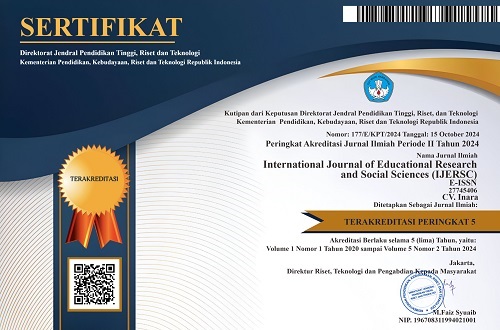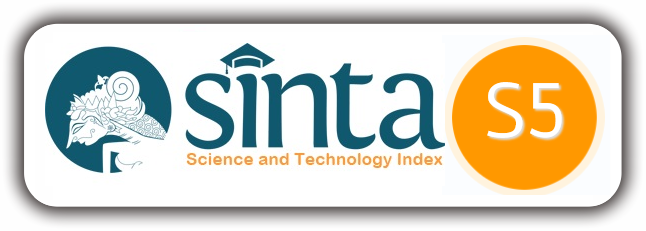Model Of Full Day School Financial Management Under Environmental Dynamics
DOI:
https://doi.org/10.51601/ijersc.v6i2.927Abstract
This study examines the portrait of operational management, unit cost of service and its influence on full day school revenue amidst environmental dynamics. The study was conducted through a case study approach. The research data are in the form of financial reports and profiles of school institutions. The analysis was carried out in three stages. First, operational ratio analysis to determine the development of the performance of operating income and operating costs of the institution during the observation year (2005-2022). Second, regression analysis to describe the function of cost per unit of service against the institution's income. Third, simulation analysis aims to determine the extent to which a product or service can be easily reconfigured to respond to environmental changes. The simulation analysis is seen from the aspects of: changes in service scale, addition of new service units, elimination of service units and transfer of service units. This study found the following results. First, the highest institutional income comes from student fees (28%), followed by full-day meal consumption (17%) and government subsidies for operations (18%). The highest institutional expenditure comes from salaries (29%), followed by full-day meal consumption (17%) and government subsidies for operations (18%). Second, the full-day meal service unit has the greatest influence on full-day school revenue followed by the elementary school and kindergarten service units. Thirdly, the modular system has the potential for school financial management under environmental dynamics.
Downloads
References
R. Pusvitasari and M. Sukur, “Manajemen Keuangan Sekolah Dalam Pemenuhan Sarana Prasarana Pendidikan: Studi kasus di SD Muhammadiyah 1 Krian, Sidoarjo,” Al-Tanzim, vol. 04, no. 01, pp. 94–106, 2020.
I. Firdausi, D. Rusqiati, N. Hayati, and H. S. Amalia, “Financial Management Behavior and Its Impact on Higher Education Performance,” Al-Tanzim, vol. 07, no. 02, pp. 393–406, 2023.
E. Andiawati, “Pengelolaan Keuangan Lembaga Pendidikan / Sekolah,” Pros. Semin. Pendidik. Ekon. dan Bisnis, pp. 1–6, 2017, [Online]. Available: https://jurnal.fkip.uns.ac.id/index.php/snpe/article/view/10646
A. Istiqomah, “Manajemen Keuangan Sekolah di TK Aisyiyah Nyai Ahmad Dahlan Full Day,” J. Manaj. Pendidik., vol. 7, no. 2, pp. 218–222, 2020, [Online]. Available: https://ejournal.uksw.edu/kelola/article/view/3151/1622
T. Simkins, “School Finance and Equity in England: An Analysis of Strategies and Consequences,” Educ. Manag. Adm. Leadersh., vol. 32, no. 4, pp. 369–386, 2004, doi: 10.1177/1741143204046493.
A. H. Reyes and G. M. Rodriguez, “School finance: Raising questions for urban schools,” Educ. Urban Soc., vol. 37, no. 1, pp. 3–21, 2004, doi: 10.1177/0013124504268103.
A. R. Wagini, “Performance Analysis of School Based Financial Management in Sdit Iqra’1 Bengkulu,” J. BAABU AL-ILMI Ekon. dan …, pp. 54–68, 2018, [Online]. Available: https://ejournal.iainbengkulu.ac.id/index.php/alilmi/article/view/850
D. Roo, “Planning and complexity : Engaging with temporal dynamics , uncertainty and complex adaptive systems,” Environ. Plan. B Plan. Des. 2016, vol. 43, no. 6, pp. 970–974, 2016, doi: 10.1177/0265813516675872.
S. Järvelä and S. Volet, “Motivation in real-life, dynamic, and interactive learning environments: Stretching constructs and methodologies,” Eur. Psychol., vol. 9, no. 4, pp. 193–197, 2004, doi: 10.1027/1016-9040.9.4.193.
Kustiyono, M. Rachmawati, and A. Aziz, “Covid-19 Pandemic: Its Effect On Retail Business Growth In Indonesia,” Int. J. Econ. Bus. Account. Res., vol. 6, no. 1, pp. 515–520, 2022.
G. George, R. Merrill, and S. Schillebeeckx, “Digital Sustainability and Entrepreneurship: How Digital Innovations Are Helping Tackle Climate Change and Sustainable Development,” Entrep. Theory Pract., vol. 0, no. 00, pp. 1–28, 2020, doi: 10.1177/1042258719899425.
J. Cope, “Toward a Dynamic Learning Perspective of Entrepreneurship,” Entrep. Theory Pract. SAGE Journals, no. 852, p. 10, 2008.
Ontario, “Dynamic Learning: Connecting Student Learning and Educator Learning,” Support every child Res. every student, vol. 8482, no. September, pp. 1–8, 2013.
D. J. Teece, G. Pisano, and A. Shuen, “Dynamic capabilities and strategic management,” Strateg. Manag. J., vol. 18, no. 7, pp. 509–533, 1997, doi: 10.1142/9789812796929_0003.
N. Worren, K. Moore, and P. Cardona, “Modularity, strategic flexibility, and firm performance: A study of the home appliance industry,” Strateg. Manag. J., vol. 23, no. 12, pp. 1123–1140, 2002, doi: 10.1002/smj.276.
F. Wang, G. Chen, and D. Li, “The formation and operation of modular organization: A case study on Haier’s ‘market-chain’ reform,” Front. Bus. Res. China, vol. 2, no. 4, pp. 621–654, 2008, doi: 10.1007/s11782-008-0034-3.
M. Benassi, “Investigating modular organizations,” J. Manag. Gov., vol. 13, no. 3, pp. 163–192, 2009, doi: 10.1007/s10997-008-9078-1.
A. B. Escrig-Tena, J. C. Bou-Llusar, I. Beltrán-Martín, and V. Roca-Puig, “Modelling the implications of quality management elements on strategic flexibility,” Adv. Decis. Sci., vol. 2011, 2011, doi: 10.1155/2011/694080.
H. C. Vo-Thai, S. Lo, and M. L. Tran, “How Capability Reconfiguration in Coping With External Dynamism Can Shape the Performance of the Vietnamese Enterprises,” SAGE Open, vol. 11, no. 3, 2021.
M. Gru, S. Lier, and D. Wo, “Transformable Production Concepts : Flexible , Mobile ,” ChemBioEng Rev, vol. 3, no. 1, pp. 16–25, 2016, doi: 10.1002/cben.201500027.
J. Zhang, F. Li, and X. Zhang, “Decoupling Strategy and Modular Design for Loosely Coupled Organizations,” Discret. Dyn. Nat. Soc., vol. 00, no. 0, 2021.
C. Gärtner and O. Schön, “Modularizing business models: between strategic flexibility and path dependence,” J. Strateg. Manag., vol. 9, no. 1, pp. 39–57, 2016, doi: 10.1108/JSMA-12-2014-0096.
J. A. Martin and K. M. Eisenhardt, “Coping wWith Decline in Dynamic Markets: Corporate Entrepreneurship and The Recombinative Organizational Form,” Bus. Strateg. over Ind. Lifecycle, pp. 357–382, 2015, doi: 10.1016/S0742-3322(04)21012-9.
G. J. L. Micheli, P. Trucco, and Y. Sabri, “Modularization as a system life cycle management strategy : Drivers , barriers , mechanisms and impacts,” Int. J. Eng. Bus. Manag., vol. 11, pp. 1–23, 2019, doi: 10.1177/1847979018825041.
P. Aversa, S. Haefliger, A. Rossi, and C. Baden-fuller, “From Business Model To Business Modelling: Modularity And Manipulation,” Bus. Model. Model., vol. 33, pp. 97–131, 2015.
T. Clauss, M. Breier, S. Kraus, S. Durst, and R. V Mahto, “Temporary business model innovation – SMEs ’ innovation response to the Covid- 19 crisis,” R&D Manag., pp. 294–312, 2021, doi: 10.1111/radm.12498.
Downloads
Published
How to Cite
Issue
Section
License
Copyright (c) 2025 International Journal of Educational Research & Social Sciences

This work is licensed under a Creative Commons Attribution 4.0 International License.






















